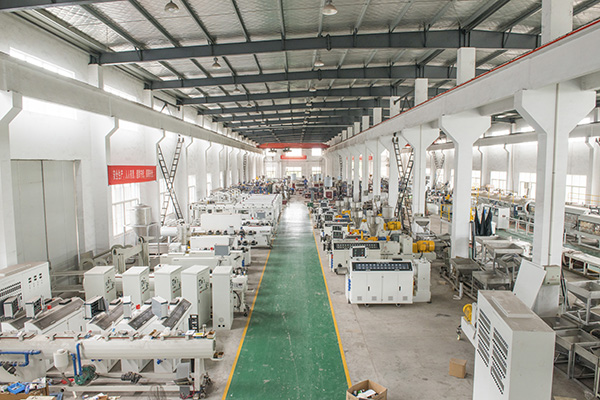- Call: +86-13584426116
- Email: info@borun-machinery.com
- Get a Quote
HDPE is a non-polar thermoplastic resin with high crystallinity. The appearance of the original HDPE is milky white, and the thin section is translucent to a certain extent. PE has excellent resistance to most domestic and industrial chemicals. Certain types of chemicals can cause chemical corrosion, such as corrosive oxidizers (concentrated nitric acid), aromatic hydrocarbons (xylene) and halogenated hydrocarbons (carbon tetrachloride). The polymer is non-hygroscopic and has good water vapor resistance, and can be used for packaging purposes. HDPE has good electrical properties, especially the high dielectric strength of the insulation, making it very suitable for wires and cables. Medium to high molecular weight grades have excellent impact resistance, even at room temperature and even at low temperatures of -40F.
Application of HDPE Pipes:
PE has many uses, such as wires, cables, hoses, pipes and profiles. Pipe applications range from small-section yellow pipes for natural gas to thick-walled black pipes with a diameter of 48in for industrial and urban pipelines. The use of large-diameter hollow-wall pipes as a substitute for rainwater drainage pipes made of concrete and other sewer pipes is growing rapidly.
Note editing Voice:
1. It is recommended to take sheltering measures for outdoor laying in the open air and places exposed to sunlight.
2. Buried HDPE water supply pipelines, pipelines with DN≤110 can be installed in a serpentine shape in summer, pipelines with DN≥110 have sufficient soil resistance and can resist thermal stress, so there is no need to reserve a pipe length; in winter, there is no need Reserve the tube length.
3. When installing HDPE pipelines, if the operating space is too small (such as: pipeline wells, ceiling construction, etc.), electrofusion connection methods should be used.
4. When connecting hot-melt sockets, the heating temperature should not be too high or too long, and the temperature should be controlled at 210±10℃, otherwise it will cause too much squeeze out of the fittings and reduce the inner diameter of the water; the pipe fittings are inserted. Or the pipe interface should be clean, otherwise it will cause the socket to escape and leak; at the same time, pay attention to control the angle and direction of the pipe to avoid rework.
5. When connecting hot melt butting, the voltage is required to be between 200~220V. If the voltage is too high, the temperature of the heating plate will be too high and the voltage will be too low, and the docking machine will not work normally; when docking, keep the interface aligned, otherwise It will cause insufficient butt joint area, insufficient weld strength, and improper crimping; when the heating plate is heated, the pipe interface is not cleaned, or the heating plate has impurities such as oil and sand, which will cause the joint to detach and leak; heating time It must be controlled well. The heating time is short and the pipe heat absorption time is not enough, which will cause the welding edge to be too small, and the heating time will be too long, which will cause the welding edge to be too large and may form a false weld.
Borun Machinery is able to supply the complete HDPE Pipes Extrusion Production Lines for the pipe diameter from 16mm to 1200mm. Welcome to contact us for more information.
